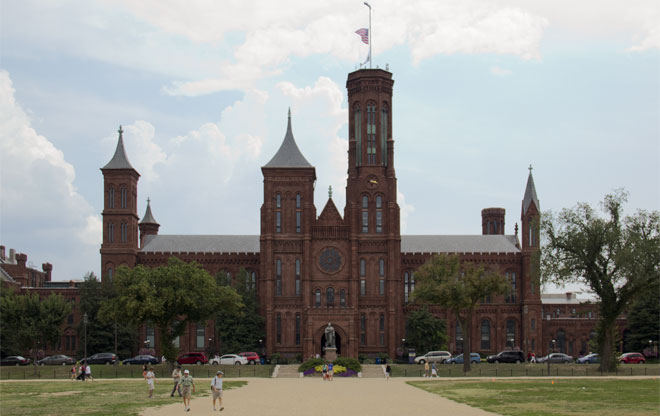
The Castle
Affectionately referred to as the “Castle,” the first building to house the Smithsonian Institution was originally surrounded by shade trees, curvilinear walks, and meadow plantings that were remnants of A.J. Downing’s vision for the National Mall. Upon the realization of the MacMillan Plan of 1901, the Castle became the only building which interrupts the strict geometry of that plan’s lawn panels and bosques of elm trees. This siting contributes to its tremendously iconic presence on the Mall.
Image: OLIN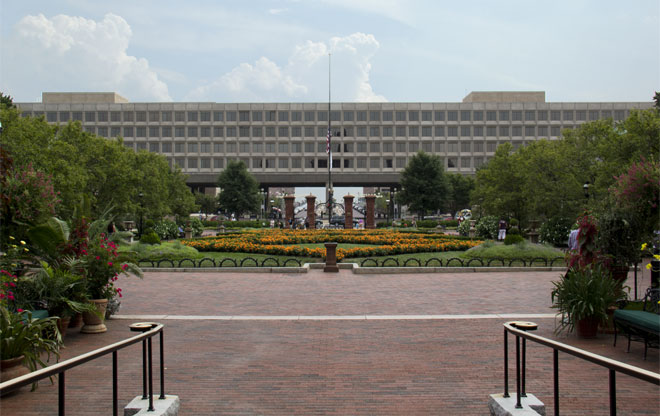
The Victorian Parterre
Behind the Castle, the Victorian Parterre is the centerpiece of the Enid A. Haupt Garden. The first parterre was constructed here in 1976 in honor of the Bicentennial and subsequently recreated in 1987 as a green roof for the Quadrangle Building which houses the Sackler Gallery of Art, the Museum of African Art, and the S. Dillon Ripley Center. Beyond the parterre, the south gate frames a striking view down 10sth Street to Benjamin Banneker Park, designed by famed Modernist landscape architect Dan Kiley.
Image: OLIN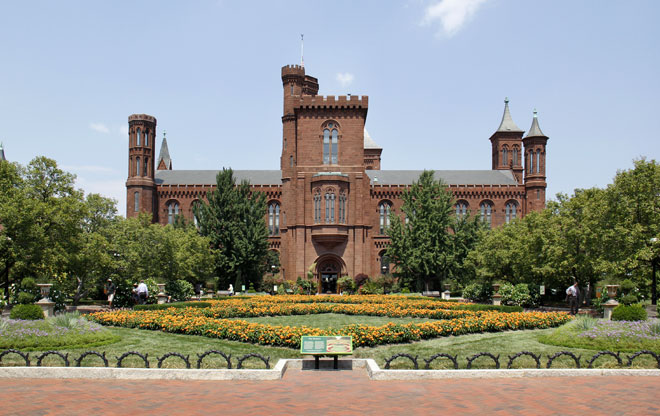
A Green Roof
This dramatic view of the Victorian parterre with the Castle as a backdrop is made even more surprising when one considers that this garden is actually planted on the roof of the underground Quadrangle building. The diamond patterning of the annual plantings is repeated throughout the series of three garden rooms designed by Jean Paul Carlhian, Lester A. Collins, and Sasaki, Walker and Associates. The parterre has a lush quality and served as a testimony to Mrs. Haupt’s renowned legacy as a philanthropist and advocate of gardens for the public.
Image: OLIN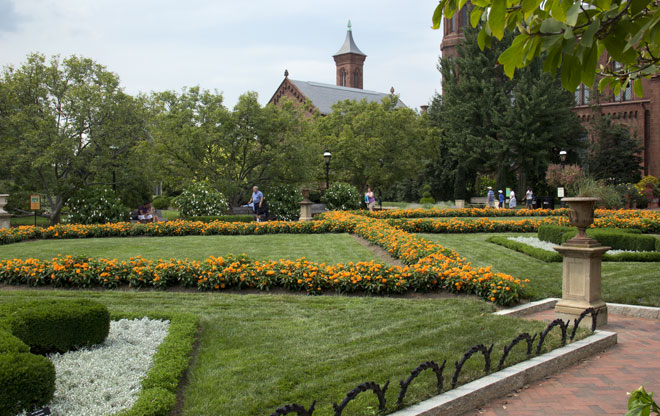
A Victorian Sensibility
The parterre consists of various layers of plantings—a lawn edged in granite curbing, simple perennial plantings in various shades of green and grey, and the more colorful annual plantings that form the signature diamond pattern. A row of Saucer magnolia trees define the edge of this garden and both the wrought iron scalloped fencing and the urns set atop podiums lend a Victorian sensibility.
Image: OLIN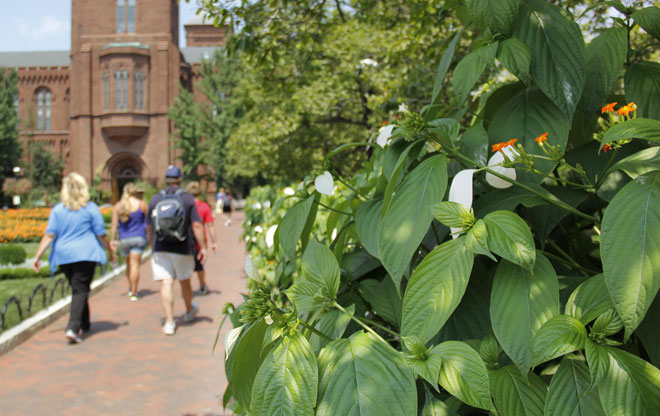
A Living Classroom
The Haupt garden is meant to be an extension of the collections housed within the Castle, the Sackler Gallery of Art, and the Museum of African Art. In keeping with the Smithsonian’s educational mission, many of the plantings have been labeled with their botanic names, making this garden an outdoor, “living” classroom. During the summer months, numerous potted plants with exotics such as this shrub from India (Mussaenda frondosa) are added to increase the number and variety of plants on display.
Image: OLIN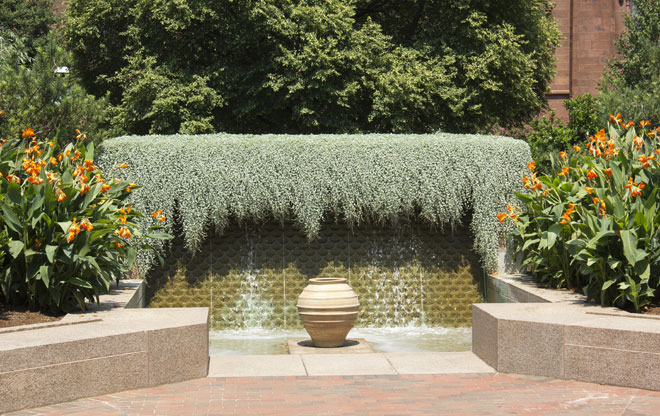
The Fountain Garden
Associated with the Museum of African Art, the Fountain Garden’s design was inspired by the Alhambra, a 14th century Islamic palace in Grenada, Spain. A waterfall, inspired by the tradition of chadars, is the focus of this garden. Its surface is roughened to make the water ripple and garden glisten in the sunlight.
Image: OLIN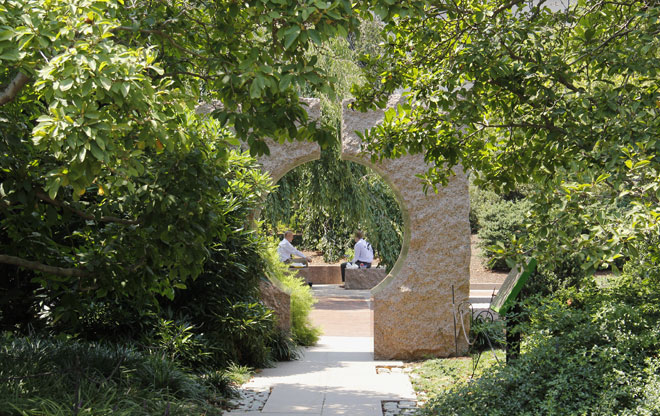
The Moon Gates
Shaded paths within the Haupt garden are prevalent, including this one which leads to the Moongate garden. This garden room is defined by the “moon gates,” made of roughly hewn pieces of pink granite and framed by dense plantings, fostering a sense of quiet intimacy.
Image: OLIN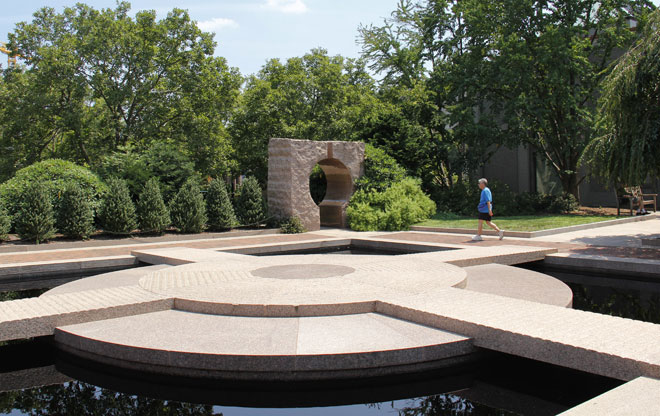
The Moongate Garden
The design of the Moongate garden was inspired by the Temple of Heaven, a 15th century religious complex in Beijing. A pool of water with four paths and a circular form at its center allow the public to walk into the middle of this water element. By using a dark color for the base of the pool, the water reflects the sky above.
Image: OLIN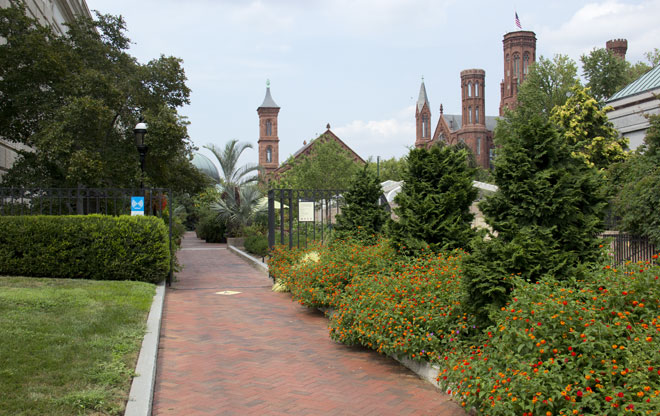
Mirroring the Architecture
This path draws visitors into the Haupt Garden from Independence Avenue. The stately evergreens in the bed to the right pick up on the verticality of the Castle building and its series of tower structures. These plantings are also designed to mask the loading dock located behind this path.
Image: OLIN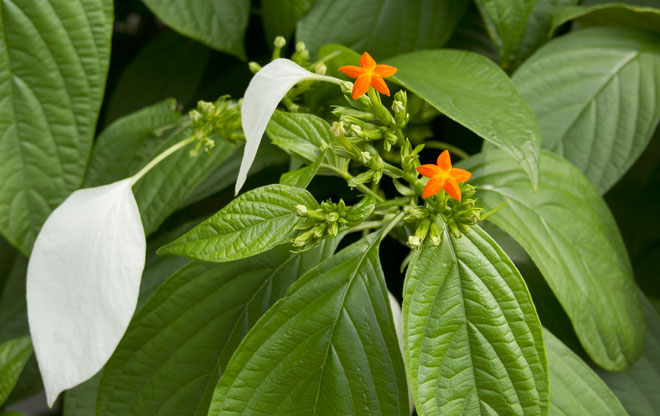
Mussaenda Frondosa
This shrub from India with its singular white leaves (Mussaenda frondosa) is just one of many botanical surprises to be found in the Haupt Garden. The garden truly fulfills its donor’s wish to share her love of the natural world with the public, with millions of visitors to the Mall enjoying these garden rooms each year.
Image: OLIN